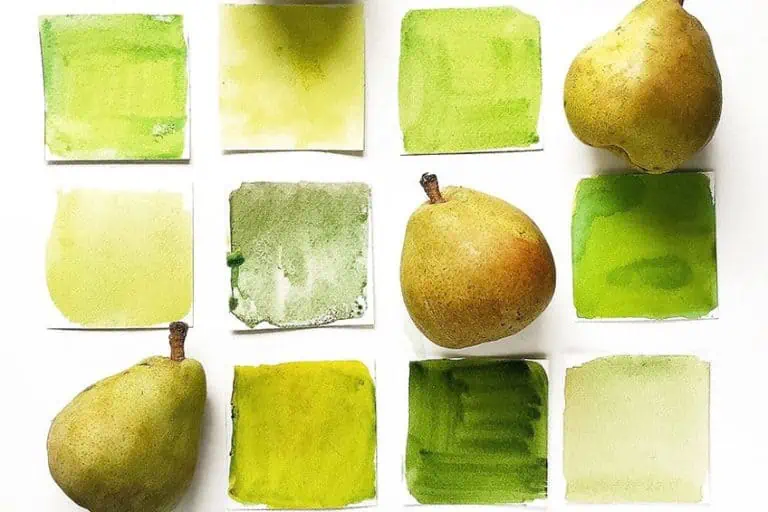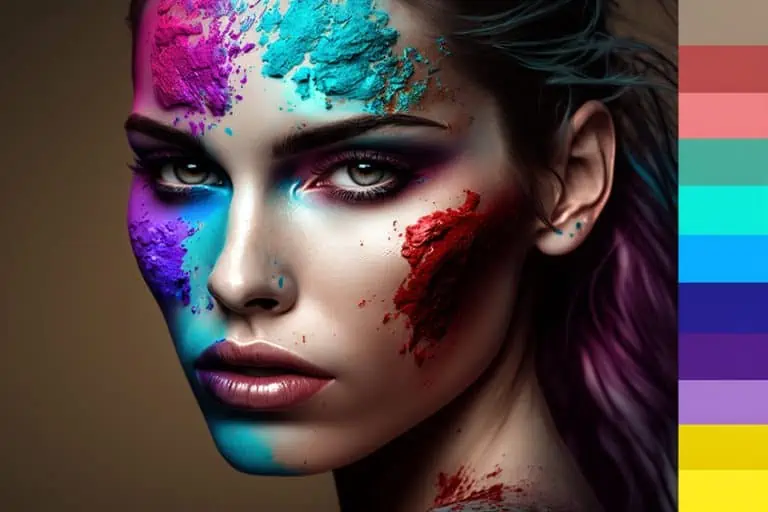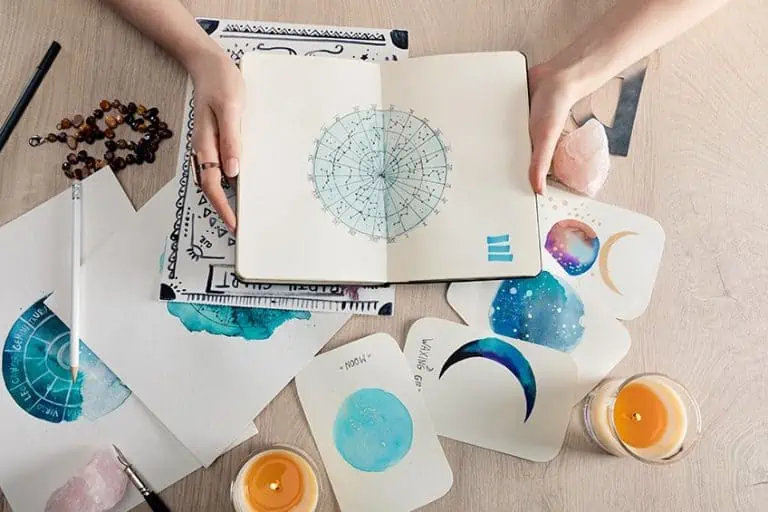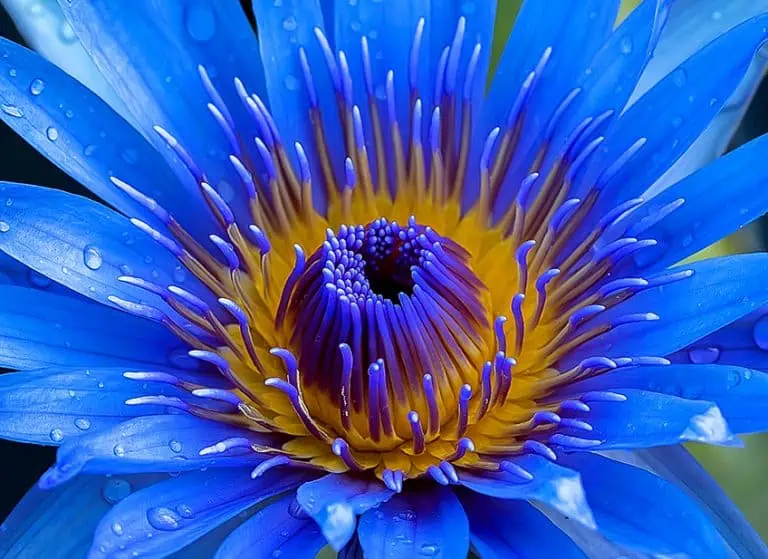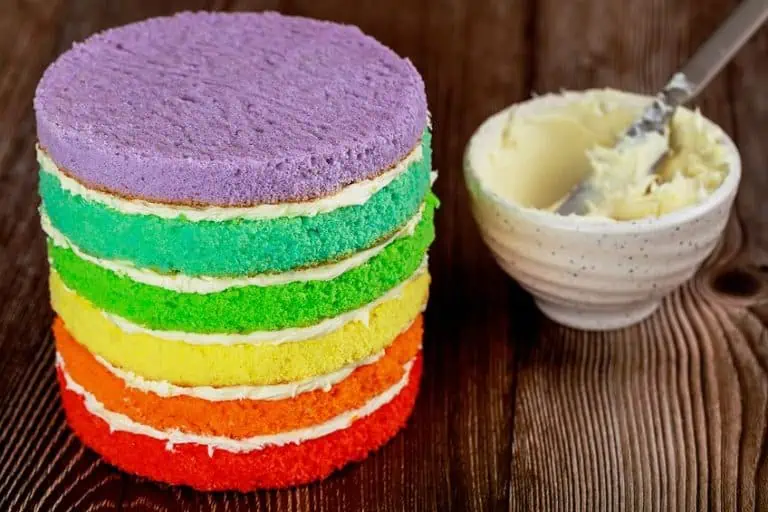Meaning of the Color Red – Exploring the Red Revolution
This post may contain affiliate links. We may earn a small commission from purchases made through them, at no additional cost to you.
More often than not, red is viewed as a color that expresses passionate and powerful emotions. While the positives behind the meaning of the color red are wonderful, the negatives often tell the tale of people being led down a path of malice and destruction. However, there is a lot more behind the red color symbolism than meets the eye. Below, we have taken the liberty to provide you with everything that you would need to know about the color and more!
Table of Contents
The Meaning of the Color Red
Red has a variety of meanings and more often than not, we tend to focus on the positive ones rather than the negative ones, which is a very optimistic approach. However, it is always good practice to have a clear understanding of both.
 Red color meaning infographic. Click on the image to download a printable PDF.
Red color meaning infographic. Click on the image to download a printable PDF.
Positive Meanings
When we look at the color red and ask ourselves, “what does red mean?”, we consider energy, the life-giving force of blood, and helping anyone in need. When we are in love, we use red roses to convey the message to partners or potential partners, and simply positive life events are commonly referred to as “red letter days.”
Red has the ability to motivate us to take action, and even wearing it is a display of being in a state of readiness. Red is also linked with luxury, with various brands such as Ferrari and Louboutin both proclaiming a person’s economic status.
Nevertheless, red does not always indicate animosity or danger. Red, unsurprisingly, represents love, affection, and yearning. These relationships could serve to clarify why people who dress in red are frequently seen as more attractive by those of the opposing gender. In a pivotal 2008 study, investigators showed men a photograph of a lady and then asked them to judge her beauty. Some guys observed a woman in a red shirt, while others observed an identical woman in a blue shirt. Men evaluated the lady in red as more physically appealing than the identical woman in blue, according to the results.

Red is undoubtedly the most prominent color, being a strong, bold, and appealing hue. The color red, which is commonly seen when driving, warns us to be careful. While it also makes us stop, it also provides a lot of warmth. We cannot help but feel safe when this scarlet tint rears its cherry head. In simple terms, the color red helps to protect us from harm.
- Love
- Energy
- Passion
- Luxury
- Intensity
Negative Meanings
Red is associated with thoughts of violence, risk, and rage, much as blood may be associated with either its life-giving or violent properties. Matadors wear red capes to hide the bloody marks of their heinous sport, not to attract the attention of the beasts they fight.
“Seeing red” can signify rage beyond what reason can control, and red flags signal when anything is wrong with an individual or a situation. Red is also linked to financial loss as indicated by the downward signals on stock reports.
Because of its long wavelength, red makes up one of the more visible colors on the color wheel. Because of its ability to quickly pique the interest of others, it is commonly used to warn people of impending danger. Think about things like stop signs, fire engines, alarms, and junction red lights. Red is occasionally used to symbolize danger in a non-literal way.

The color red, while often associated with bloodshed, might elicit feelings of melancholy and defeat. It may also be a reassuring presence, reminding us that we have survived another traumatic scar. From triumph to perseverance, the color red offers a distinct tale for everyone. Though it can cause sadness as well as remind us of grief, the color red is also a sign of power. Those who have seen a fair amount of red should be grateful for their emotional fortitude.
- Anger
- Risk
- Financial loss
- Violence
- Impulsiveness
The Psychology of Red
Red has been demonstrated to have physical and psychological effects on humans, resulting in both good and undesirable effects. According to studies, its warm and brilliant hue offers us more energy for productivity. The following are some ideas associated with the color red.
- Competitiveness: Through its emotional connections to dominance and power, red elicits competitive attitudes and strong drives to win or attain achievement.
- Impulsiveness: The meaning of the color red is associated with impulsive desires and stimulation-seeking. Mentally, red fosters immediacy and quick reward, which can be viewed as a negative trait.
- Attention: Because of its stimulating psychological qualities, red instinctively catches people’s interest and concentrates their mental capacities. Red also alerts and cautions people against potential danger.
- Appetite: Red has a strong psychological effect on hunger and appetite. Fast food restaurants use psychological effects in their visual marketing, good examples of this are KFC and McDonald’s.
- Stress: While bright reds are initially invigorating, extended exposure can induce anxiety, excessive stimulation, and signs of stress. The color red has psychological significance, which is among the reasons it is exploited in marketing.
- Risk-taking: Red evokes feelings of excitement and adventure. It psychologically encourages hazardous, bold conduct by conveying exhilaration and jeopardy.
- Performance: Red boosts mental agility in detail-oriented activities. However, because of the extra tension and mental effort, red can impair higher-level processing. Responses vary depending on the situation.
- Attraction: Red has psychological associations with sexuality, desire, and gender attraction. Inadvertent seeing red triggers the mind for romance and passion. Red increases the perceived appeal of an individual.
- Dominance: Red affects people’s views of power, prestige, and dominance. Being exposed to red helps people feel more powerful and in command. The color red denotes authoritative figures and requires respect.
- Aggression: While red promotes desire, it also increases anger and combative tendencies. Red has a mental connection to fury and anger. Red can trigger irrational and emotional responses.
- Passion: Red inspires us to give our all when we do the things we like. It entails expressing extreme interest and excitement for something. Red stimulates our feelings, which is the reason we work hard to complete a task or reach a certain goal, particularly if it is something that attracts us.
- Power: In comparison to the other hues, red elicits the most powerful emotions, both positive and bad. It boosts people’s self-esteem, making them feel authoritative and strong. Furthermore, red is a bright hue that helps one stick out from the rest of the group and impacts how others see them.
- Love: The color red represents love, which includes passion, sensuality, romance, and desire. We automatically visualize the color red when we are smitten, in love, or perhaps broken-hearted. It conveys powerful sentiments of attachment that can stimulate and raise one’s heart rate.
Physical Effects of Red
Red is the polar opposite of blue in certain aspects. The color red increases our heart rate, body temperature, and blood flow. Red also increases our sensitivity to our surroundings by stimulating the senses of taste and smell. Red additionally stimulates the adrenal gland, rendering us more likely to act and providing us with greater energy.

Different Shades of Red
When we consider the meaning of the color red, we would need to consider the particular shade. There are over 50 different shades of red, each presenting a different meaning and psychological effect. Below, we will take a look at three of the most popular shades of red and their respective meanings.
Blood Red
| Shade | Hex Code | CMYK Color Code (%) | RGB Color Code | Color |
| Blood Red | #880808 | 0, 94, 94, 47 | 136, 8, 8 |
Blood red can contain many of the darker or more ominous connotations of red, such as rage, violence, death, or an awareness of macabre, based on how it is employed. Blood red may also represent loyalty, as in a blood oath, and it can be linked to love, the same way blood is linked to the heart and romance.
Scarlet Red
| Shade | Hex Code | CMYK Color Code (%) | RGB Color Code | Color |
| Scarlet Red | #FF2400 | 0, 86, 100, 0 | 255, 36, 0 |
Scarlet is the traditional shade of cardinals of the Catholic Church, representing Christ’s blood as well as Christian martyrs. Consequently, it has become synonymous with religion, commitment, and sacrifices. Scarlet, like many other strong red shades, is connected with boldness, passion, fire, and joy.

Maroon
| Shade | Hex Code | CMYK Color Code (%) | RGB Color Code | Color |
| Maroon | #800000 | 0, 100, 100, 50 | 128, 0, 0 |
Maroon is a strong red hue that sometimes seems brown in patterns. Given its dark hue, it is frequently linked with power, depth, and intensity. Due to its intimate link with Buddhism, maroon invokes feelings of wisdom and spirituality.
Chakra Colors: Red
The seven chakras are the body’s primary energy centers. Muladhara, often known as the root chakra, symbolizes the foundation of our being. It anchors us to the ground and provides stability. It serves as both our foundation and our anchor. Because the chakras are ordered, when we open the root chakra and get this sense of foundation and assurance, we prepare the road for all the other chakras to open as well.
The color red signifies our basic chakra, the root chakra. It develops during our first seven years of existence and revolves around survival and safety. We may feel uneasy, unsafe, and even alienated from reality when our foundation is out of balance.

Red in Different Cultures
As expected, the color red has different meanings when presented to different cultures around the world. However, it can either be a sign of something positive or negative, whether it’s wealth or mourning. So, let’s take a look at how different cultures perceive red.
- China: Red represents luck and prosperity, which is the reason for the gifting of red envelopes on Chinese New Year.
- East Asia: Red is used to signify an increase in value in share prices on the East Asian stock market. However, this is the opposite in Western stock markets in which red is used to signify loss.
- Japan: Because red represents fulfillment and good fortune, Japanese women wear red kimonos on their wedding day.
- India: Red is a very powerful color in India as it represents purity, love, and good fortune. Brides also choose to wear red on their wedding day, which is similar to Japanese practices.
- Brazil: Red is seen as a color of love, passion, and desire.
- Russia: Red is viewed as a hue of beauty, goodness, and honor.
- Greece: The red rose represents the process of development and decomposition, as well as love and kinship. While this is something that stems from Greek mythology, it is still viewed in this way today.
- United States: Alongside blue and white, it is associated with pride and patriotism.
- South Africa: Surprisingly, red is a color of mourning in South Africa; however, in more conservative cultures, black is the default color.
- Western culture: The combination of red and green in Western culture is the traditional color scheme of Christmas. Red is linked to the blood of Jesus Christ, whereas green is linked to the evergreen tree, which represents eternal life.
Phrases and Idioms Involving Red
There are plenty of idioms and phrases that use the color red and each one has a distinct meaning that is related to different cultures. Here we will take a look at some of the most commonly used idioms and phrases along with their meanings.
- To Paint the Town Red: This term refers to having fun in locations like pubs and clubs. It is related to an incident in which the legendary hooligan, Marquis of Waterford, including a gang of companions, ran amok in Melton Mowbray, Leicestershire, painting the town’s toll-bar and other buildings red.
- Red Tape: This phrase refers to excessive bureaucracy. It first came to light during the reign of Henry VIII, who sent over 80 appeals to the Pope in an attempt to have his marriage to Catherine of Aragon annulled. Those requests were rolled, encapsulated, and secured with red tape.
- Red Herring: This phrase refers to material data that is deceptive or misleading. Some claim that hunters employed a red herring, or a smoked herring, to divert a hound’s attention away from a fox. Others claim that this word was coined by William Cobbett and that true hunters never utilized herring.
- The Red Carpet Treatment: This term refers to an extremely particular treatment generally reserved for VIPs. Members of the royal family were greeted with a separate red carpet, as per etiquette standards. This phrase originated in ancient Greece when Clytemnestra spread out a red carpet to greet the homecoming king Agamemnon.
- Red-Handed: “Red-handed” refers to being in the act of doing something wrong. It is associated with the color of blood and the possibility of a killer being caught red-handed. This remains a very popular phrase used to describe the act of having evidence or witnesses against a perpetrator.
- In the Red: If your balance is negative, you have debt. Previously, bookkeepers employed red ink to indicate credits or debts and black ink to indicate profit. Additionally, the phrase “in the black”, has the opposite meaning.

Famous Quotes About the Color Red
Naturally, red is a very popular color and there are a handful of celebrities and historical figures that have expressed their love for the color. Below are some of the most popular quotes from the likes of Laura Bush, Christian Dior, Jim Carrey, and so on.
- “Our love is like a red, red rose, and I am a little thorny” – Jim Carrey (17 January 1962 – Present)
- “There is certainly a red for everyone” – Christian Dior (21 January 1905 – 24 October 1957)
- “Nothing attracts attention like a red dress” – Laura Bush (4 November 1946 – Present)
- “Stronger than alcohol, vaster than poetry, ferment the freckled red bitterness of love” – Arthur Rimbaud (20 October 1854 – 10 November 1891)
- “With a smile that glowed celestial rosy red, loves proper hue” – John Milton (9 December 1608 – 8 November 1674)
Fun Facts About Red
While red can be found throughout nature, it also has its place in a world created by humanity. There is plenty that we can learn about this color, and what better way to learn than through some interesting facts such as those that we have listed below?
- When compared to other colors, red has the longest wavelength. It is the first hue newborns see, and it is the one that begins to fade when the sun sets.
- The reason red glass is expensive to create is because it is the rarest shade of sea glass. Red sea glass is created from glass containing gold. Gold combines with the other elements in the glass to generate a pink or red tint when applied to the molten glass solution. Collectors generally treasure red sea glass since it is rare.
- The color red stimulates the appetite. When ripe, cranberries, strawberries, and apples all become red.
- Red hair is only found in 1-2% of the world’s inhabitants. Redheads are more vulnerable to sunshine and thermal discomfort than other hair colors, and even though redheads have less hair, it is less susceptible to graying with age.
- Because red pens are linked with negative criticism, red ink on a test sheet can have a detrimental impact on students’ grades.
- It was discovered that red is the color of victory. Weightlifters exhibit an improvement in their muscle power when exposed to red light. In the world of video games, red players are more likely to win compared to players of other colors.
- The hue “madder red” was employed in French royal textiles. The color was made from ox blood, cow or sheep manure, and rancid castor oil.

Companies Who Use Red
As we have already explained, red is an incredibly eye-catching color and it is used by a variety of companies in their marketing and branding. Some fast food establishments use red to increase appetite, whereas others use it to signal urgency and excitement. Below are some of the most popular brands that use the color red as a logo.
- Colgate
- Nintendo
- Adobe
- KFC
- Marvel
- Red Bull
- Lego
- CNN
- McDonald’s
- Coca-Cola
- Virgin
Now that we have a clear understanding of red and how it affects us, we can use it appropriately in different designs and wear it in the right situations. Red is an incredibly popular color that has incredibly powerful meanings and psychological effects, so it is up to you how you use it.
Frequently Asked Questions
What Is the True Meaning of the Color Red?
There are plenty of meanings that are linked to the color red, therefore, it cannot be described with one or two terms. This is a color that embodies a myriad of amazing qualities such as familiarity, kindness, love, and passion. However, there are also negative qualities represented by the same color. This includes anger, aggression, and danger, so if you are wondering, what does red mean?, it ultimately depends on the context.
What Is the Psychology Behind Red Color Symbolism?
In many cultures, most people have developed the habit of associating red with anger. However, it is also associated with romance, which is the reason it is used on Valentine’s Day. Additionally, it symbolizes feelings of passion and desire alongside power and dominance. It should also be noted that different shades of red have different meanings.
What Does Red Mean in Pastel Shades?
Pastel red has a specific meaning as it is associated with love, sensitivity, romance, and joy. This is largely due to its similarities to pink, but it also has a dreamy aesthetic which has gained popularity.
Duncan graduated with a diploma in Film and TV production from CityVarsity in 2018, after which he continued pursuing film while taking on a keen interest in writing along the way. Since having graduated, he began working as a freelance videographer, filming a variety of music videos, fashion and short films, adverts, weddings and more. Throughout this, he’s won a number of awards from various film festivals that are both locally and internationally recognized. However, Duncan still enjoys writing articles in between his filming ventures, appreciating the peace and clarity that comes with it.
His articles focus primarily around helping up-and-coming artists explore the basics of certain colors, how these colors can be paired with other shades, as well as what colors are created when you mix one with another. All while relating these shades to historically significant paintings that have incorporated them into their color palette. As a lover of the arts himself, he takes great interest in the Renaissance era of paintings, an era that has directly inspired many of his favorite films.
Learn more about Duncan van der Merwe and about us.



